Pakhet ‘Night Huntress’: Egyptian War-Like Lioness Goddess Associated With Artemis
A. Sutherland - AncientPages.com - In the Egyptian pantheon, Pakhet is a fierce lioness (or panther) goddess of war.
Her name means (‘she who scratches ‘ or ‘tearer’) and one of her titles is ‘Goddess at the Entrance of the Wadi’ probably referring to the lion’s habit to appear in places with water located at the edge of the desert.

Seti I and Pakhet in the sacred shrine Speos Artemidos. Image source
More exactly, as a lioness goddess, Pakhet ruled the Eastern part of Sahara Desert, located east of the Nile river, between the river and the Red Sea. Referred to as “She Who Opens the Ways of the Stormy Rains”), Pakhet was linked to rapid flooding taking place in the region and desert storms, in the same way as another Egyptian lioness and aggressive hunter of the desert, Sekhmet.
Amulets Of Pakhet Were Believed To Protect
She was not frequently portrayed in ancient Egyptian art, but her most usual depictions show her in the form of a lioness-headed woman or as a feline, killing snakes with her sharp claws. Pakhet’s claw amulets were worn by royal women to provide protection and fertility and happy motherhood.
Other amulets usually depicted the lion goddess standing over her fallen captives and prey – a representation of the subdued chaos she signified.
While merged into a three-headed deity with Mut (Egyptian mother goddess) and Nekhbet (associated with Ra and Osiris), Pakhet kept the deceased from coming to harm.
Sacred Shrine Of Pakhet In Speos Artemidos
This goddess was worshiped in Speos Artemidos, an ancient Egyptian rock shrine, situated in a lonely desert valley south of the tombs at Beni Hasan, on the east bank of the Nile. It is believed the shrine was carved out of the limestone in the 18th Dynasty during the reign of Hatshepsut and Tuthmosis the 3rd.
In Hellenistic times, Pakhet was identified with Artemis, Greek goddess of the hunt, forests, archery, wild animals. This explains Greek name of the rockshrine, ‘Speos Artemidos’ - Artemis Sanctuary or Cave of Artemis.
See also:
Sokar – Patron Deity Of Ancient Necropolis Of Memphis In Lower Egypt
Geb – Egyptian God Of Earth And Member Of The Ennead – His Laughter Created Earthquakes
Khepri – Egyptian Progenitor God, Spirit Of Life, Resurrection And The Rising Sun
At Speos Artemidos, there is an inscription by the Pharaoh Hatshepsut that credits Pakhet, "mistress of the desert plateau... who roams the wadis in the midst of the East with having "opened the roads for the water-torrent without drenching me, in order to catch the water…'

The rock cut temple of Pakhet by Hatshepsut in Speos Artemidos. Image source
One more ancient temple dedicated Pakhet was at this particular location; however, the structure has not survived. The pharaoh Hatshepsut was known to have restored temples in the region, which was badly damaged by the Hyksos invasion in 1650 BC.
In 'Coffin Texts', spell 470, Pakhet is introduced as a night huntress - "Pakhet the Great, whose eyes are keen and whose claws are sharp, the lioness who sees and catches by night."
Other titles and epithets of Pakhet include 'Horus Pakhet', due to many mummified hawks unearthed at the site, as well as 'Pakhet-Weret-Hekau' (“She who has great magic), implying her association with Hathor or Isis.
Written by – A. Sutherland - AncientPages.com Senior Staff Writer
Copyright © AncientPages.com All rights reserved. This material may not be published, broadcast, rewritten or redistributed in whole or part without the express written permission of AncientPages.com
Expand for referencesMore From Ancient Pages
-
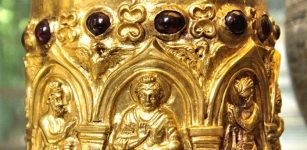 The Bimaran Casket – Rare Golden Artifact Found In Ancient Stupa
Artifacts | Dec 17, 2018
The Bimaran Casket – Rare Golden Artifact Found In Ancient Stupa
Artifacts | Dec 17, 2018 -
 On This Day In History: Battle of Oosterweel Was Fought – On Mar 13, 1567
News | Mar 13, 2017
On This Day In History: Battle of Oosterweel Was Fought – On Mar 13, 1567
News | Mar 13, 2017 -
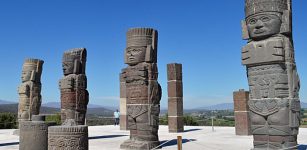 Obscure History Of Atlantean Statues In Ancient Toltecs’ City Of Tula
Artifacts | Oct 19, 2020
Obscure History Of Atlantean Statues In Ancient Toltecs’ City Of Tula
Artifacts | Oct 19, 2020 -
 Monumental Fortification That Protected The Kings Of Jerusalem Unearthed In The City Of David
Archaeology | Jul 23, 2024
Monumental Fortification That Protected The Kings Of Jerusalem Unearthed In The City Of David
Archaeology | Jul 23, 2024 -
 Top 10 Archaeological Discoveries 2023
Archaeology | Dec 27, 2023
Top 10 Archaeological Discoveries 2023
Archaeology | Dec 27, 2023 -
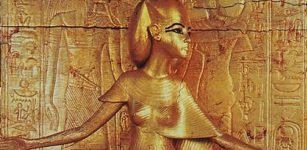 Serket: Scorpion Goddess Who Could Heal Poisonous Bites And Sting Evildoers
Egyptian Mythology | May 17, 2019
Serket: Scorpion Goddess Who Could Heal Poisonous Bites And Sting Evildoers
Egyptian Mythology | May 17, 2019 -
 New Fossil Link In Bird Evolution Discovered
Evolution | Sep 7, 2023
New Fossil Link In Bird Evolution Discovered
Evolution | Sep 7, 2023 -
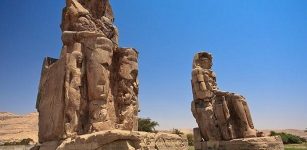 Colossi Of Memnon: Gigantic Stone Statues Guarding The Temple Of Pharaoh Amenhotep III
Civilizations | Jul 13, 2016
Colossi Of Memnon: Gigantic Stone Statues Guarding The Temple Of Pharaoh Amenhotep III
Civilizations | Jul 13, 2016 -
 Baffling Unexplained Encounters With Tiny Mysterious Creatures Feeding On Energy
Featured Stories | Feb 20, 2025
Baffling Unexplained Encounters With Tiny Mysterious Creatures Feeding On Energy
Featured Stories | Feb 20, 2025 -
 The Untold Story Of The Great Sphinx – Puzzling Discoveries – Part 2
Ancient Mysteries | Aug 13, 2019
The Untold Story Of The Great Sphinx – Puzzling Discoveries – Part 2
Ancient Mysteries | Aug 13, 2019 -
 Ancient Chinese Ingenuity Created Sophisticated Time Keeping Machines: Proof Of Remarkable Ancient Knowledge
Ancient Technology | Jan 14, 2019
Ancient Chinese Ingenuity Created Sophisticated Time Keeping Machines: Proof Of Remarkable Ancient Knowledge
Ancient Technology | Jan 14, 2019 -
 Enigma Of Mount Ararat – Researchers Are Determined To Reveal The Truth To The World
Featured Stories | Jun 27, 2014
Enigma Of Mount Ararat – Researchers Are Determined To Reveal The Truth To The World
Featured Stories | Jun 27, 2014 -
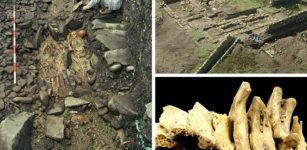 Isle Of May Was A Pictish Healing Center – Monks Used Herbs To Treat Sick And Dying People
Archaeology | Feb 16, 2018
Isle Of May Was A Pictish Healing Center – Monks Used Herbs To Treat Sick And Dying People
Archaeology | Feb 16, 2018 -
 Brokkr And Eitri – Norse Dwarves Who Fashioned Magical Artifacts For The Gods
Featured Stories | Aug 19, 2019
Brokkr And Eitri – Norse Dwarves Who Fashioned Magical Artifacts For The Gods
Featured Stories | Aug 19, 2019 -
 New Species Of Stegosaur Is Oldest Discovered In Asia, And Possibly The World
Fossils | Mar 7, 2022
New Species Of Stegosaur Is Oldest Discovered In Asia, And Possibly The World
Fossils | Mar 7, 2022 -
 Kylfings – Unknown Warriors Mentioned On Norse Runes – Were They Members Of The Varangian Guard?
Civilizations | Mar 15, 2018
Kylfings – Unknown Warriors Mentioned On Norse Runes – Were They Members Of The Varangian Guard?
Civilizations | Mar 15, 2018 -
 Previously Unknown Early Christian Church Unearthed In Ancient City Of Artaxata
Archaeology | Oct 18, 2024
Previously Unknown Early Christian Church Unearthed In Ancient City Of Artaxata
Archaeology | Oct 18, 2024 -
 Nastrond (Náströnd): Grisly Hall Of Corpses – Norse Vision Of Most Terrible Place In Niflheim, Kingdom Of The Dead
Featured Stories | Sep 13, 2019
Nastrond (Náströnd): Grisly Hall Of Corpses – Norse Vision Of Most Terrible Place In Niflheim, Kingdom Of The Dead
Featured Stories | Sep 13, 2019 -
 On This Day In History: Sir Christopher Wren – Famous English Architect Was Born – On Oct 20, 1632
News | Oct 20, 2016
On This Day In History: Sir Christopher Wren – Famous English Architect Was Born – On Oct 20, 1632
News | Oct 20, 2016 -
 Hun Warrior’s Grave Filled With Gold Treasures Discovered In Romania
Archaeology | Feb 6, 2023
Hun Warrior’s Grave Filled With Gold Treasures Discovered In Romania
Archaeology | Feb 6, 2023
